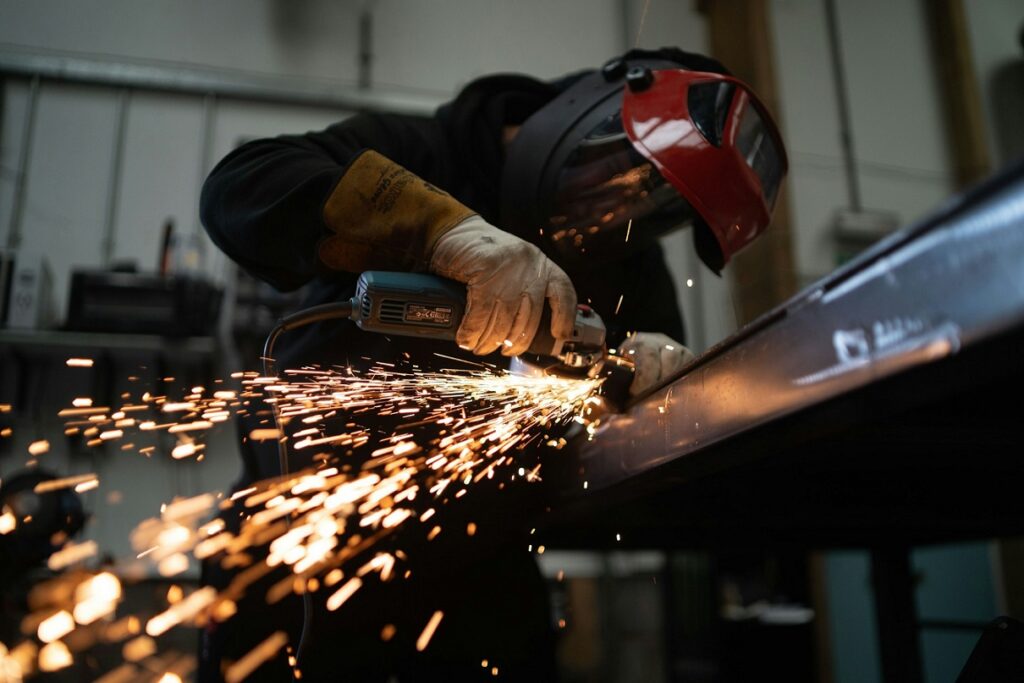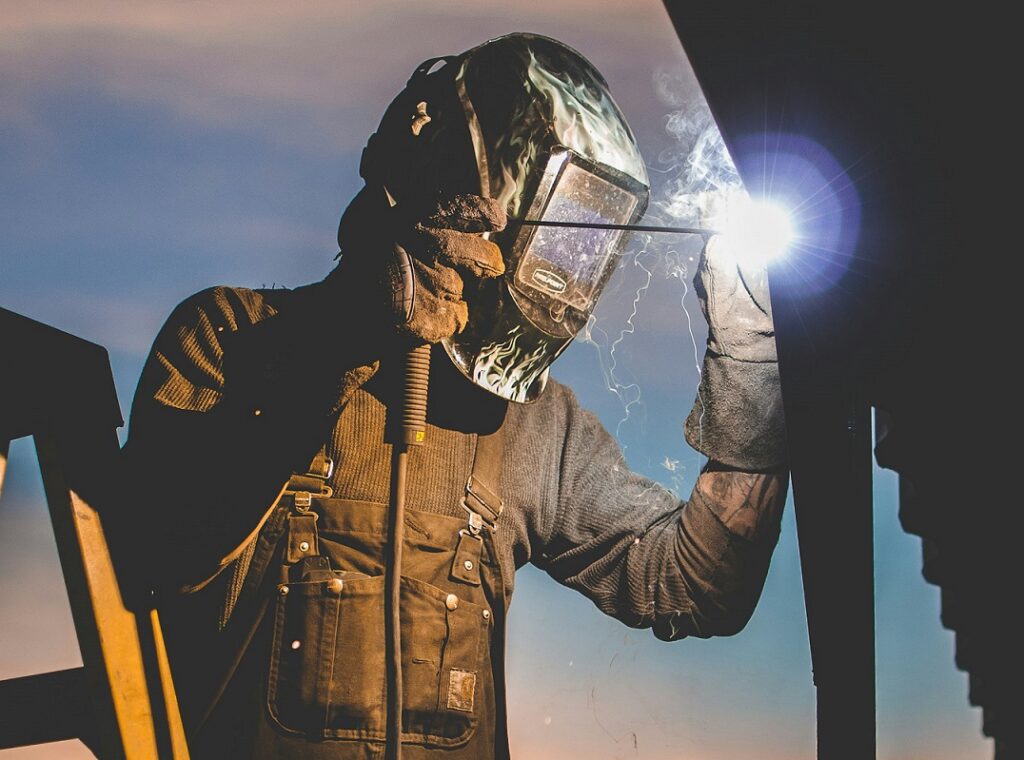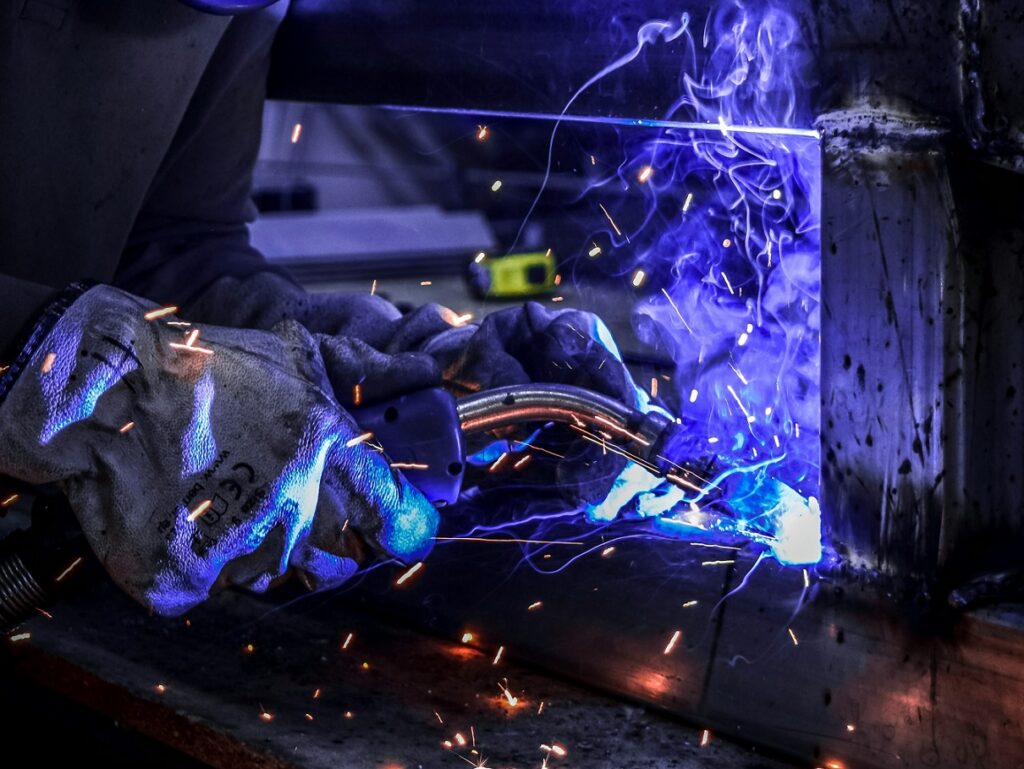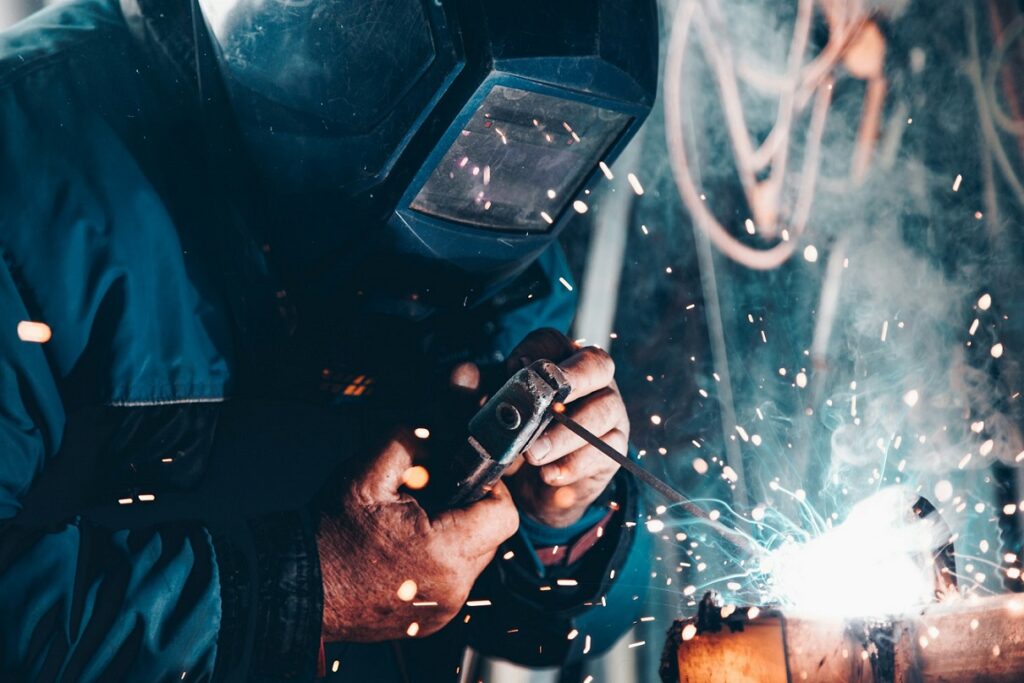The Hidden Chemistry in Metalsmithing, Metallurgy, and Forming: Insider’s Perspective in Metalworking
In a world where raw materials are transformed into intricate masterpieces, the art of metalworking stands as a testament to human ingenuity and skill. From the rhythmic clanging of a blacksmith’s hammer to the precise extrusion of molten metal, this ancient craft has evolved into a multifaceted discipline that combines science, artistry, and a deep reverence for the materials that shape our world.
In this article, we’ll delve into the captivating realm of metalsmithing, exploring the intricacies of metals, the skilled professionals who bring them to life, and the processes that define this fascinating field. Brace yourselves, for we’re about to embark on a journey that will unveil the secrets of an age-old craft that continues to captivate and inspire.
What Do you Call a Metalsmith who Usually Works with Iron or Steel?
When you think of metalworking, the image of a burly female or male blacksmith, their face illuminated by the fiery glow of a forge, is likely to come to mind. And rightfully so, for these skilled artisans are the masters of iron and steel, the very backbone of our modern world.
A blacksmith, as defined by the Encyclopedia Britannica, is a skilled worker who heats and hammers iron or steel into desired shapes. But make no mistake, their craft is far more than mere brute force. Blacksmiths possess an intimate understanding of the properties and behavior of ferrous metals, honed through years of experience and dedication.
Imagine the rhythmic clanging of a hammer against hot metal, the sparks dancing in the air like fireflies on a summer night. This is the domain of the blacksmith, where raw iron and steel are transformed into everything from sturdy tools and hardware to intricate decorative pieces and architectural marvels. With each strike of the hammer, the metal yields to the blacksmith’s will, taking on new shapes and forms that defy its rigid nature.
But blacksmithing is more than just a trade; it’s an art form that has been passed down through generations, each smith adding their own unique flair and style to the craft. From the ornate ironwork adorning historic buildings to the functional yet beautiful tools used in various industries, the blacksmith’s touch is ever-present, a testament to their skill and artistry.

What is the Name of the Mix of Two or More Metals?
Among the many wonders in the world of metalworking, there exists a fascinating process that combines the properties of different metals to create something entirely new and extraordinary – alloying. It’s a true alchemy of sorts, where the sum of the parts transcends the individual components.
According to Harold Cobb’s Dictionary of Metals sold by the American Society for Metals (ASM) International, an alloy is a metallic material, compound, or solution composed of two or more elements, of which at least one is a metal. It’s a concept that has revolutionized the way we work with metals, allowing us to tailor their properties to suit our specific needs.
Imagine a world without alloys – a world where we’re limited to the properties of pure metals alone. It would be a world devoid of the incredible strength and durability of stainless steel, the corrosion resistance of brass, or the beautiful hues and patinas of bronze. Alloying has opened up a universe of possibilities, enabling us to create materials that are stronger, more durable, and better suited for a wide range of applications.
Take, for instance, the humble stainless steel, an alloy that combines iron with chromium and other elements. This unassuming material has become a staple in our modern world, gracing everything from kitchen appliances and surgical instruments to skyscrapers and spacecraft. Its corrosion resistance and strength have made it an indispensable part of our lives, a true testament to the power of alloying.
But the magic of alloying doesn’t stop there. From the golden hues of brass, which have adorned everything from musical instruments to decorative accents, to the rich patina of bronze, which has graced sculptures and architectural elements for centuries, the art of combining metals has given rise to a kaleidoscope of colors, textures, and properties that continue to captivate and inspire.

Is Forming a Broad Category of Metalworking?
In the world of metalworking, forming is indeed a broad category that encompasses a myriad of processes, each one a unique dance between the metal and the skilled hands that guide it. It’s a realm where raw materials are transformed into intricate shapes and forms, defying the rigid nature of these unyielding materials.
As Mikell P. Groover eloquently states in his book “Fundamentals of Modern Manufacturing: Materials, Processes, and Systems”, ‘Forming’ processes are those in which the geometry of the starting workpiece is changed by applying stresses that exceed the yield strength of the material.
Within this broad category, a multitude of techniques exist, each one a testament to the ingenuity and creativity of metalworkers throughout history. From the rhythmic pounding of a hammer against hot steel in the forging process to the precise extrusion of metal through a die, forming processes have given rise to countless masterpieces, both functional and artistic.
Imagine the graceful curves of a hand-forged railing, each bend and twist a testament to the skill of the metalsmith. Or picture the intricate patterns etched into a sheet of metal through the process of embossing, transforming a flat surface into a work of art. These are but a few examples of the magic that can be achieved through forming processes.
But the art of shaping metal extends far beyond the realm of the decorative. From the sleek lines of an automobile body to the intricate lattice of a skyscraper’s structural framework, forming processes have played a crucial role in shaping the world around us. Each component, each piece, is a testament to the skill and precision of the metalworkers who brought it into being.

What is Pure Metal?
In the vast tapestry of metalworking, there exists a concept that is both simple and profound – the idea of pure metal. It’s a state of elemental perfection, where a metal exists in its most unadulterated form, untainted by the presence of other elements or impurities.
As William D. Callister and David G. Rethwisch describe in their book “Materials Science and Engineering: An Introduction”, a pure metal is a metal element that has a characteristic set of properties, both physical and chemical, that are different from those displayed by any other elemental metal.
Imagine holding a nugget of pure gold in your hand, its warm hue and lustrous sheen a testament to its elemental purity. Or picture a gleaming ingot of pure silver, its surface reflecting the world around it with a mirror-like clarity. These are but a few examples of the beauty and allure that pure metals possess.
But pure metals are more than just aesthetic marvels; they are also invaluable tools in the world of science and technology. From the high electrical conductivity of pure copper, which has revolutionized the way we transmit and utilize electricity, to the exceptional corrosion resistance of pure titanium, which has made it an indispensable material in the medical and aerospace industries, pure metals have played a crucial role in shaping our modern world.
Yet, achieving true purity is a challenge that has captivated metalworkers and scientists alike for centuries. Even the purest of metals may contain trace amounts of impurities or defects, as the pursuit of absolute perfection is a never-ending quest. But it is this very pursuit that has driven innovation and pushed the boundaries of what is possible in the realm of metalworking.
From the skilled blacksmiths who forge iron and steel into masterpieces to the alchemists of alloying who combine metals to create new and extraordinary materials, the world of metalworking is a place woven with skill, passion, and a deep reverence for the materials that shape our world.

How Does Chemistry Affect Metallurgy?
Imagine a world without the intricate dance between chemistry and metallurgy – a world where the secrets of extracting, purifying, and manipulating metals remain locked away, forever elusive. It’s a scenario that would leave us bereft of the marvels that have shaped our modern civilization, from the towering skyscrapers that pierce the skylines to the intricate machinery that powers our industries.
You see, chemistry and metallurgy are inextricably intertwined, bound by an unbreakable bond that has existed since the dawn of human ingenuity. It’s a relationship that governs the very essence of metalworking, from the moment we first set our sights on extracting those precious metals from the depths of the earth.
Think about it – those seemingly ordinary rocks and minerals we call ores are, in reality, complex mixtures of chemical compounds, each one a puzzle waiting to be unraveled. And it’s through the lens of chemistry that we can decipher these enigmas, employing techniques like leaching, precipitation, and solvent extraction to tease out the desired metal compounds.
Take, for instance, the humble copper – a metal that has been woven into the fabric of human civilization for millennia. To extract this versatile element from its ores, we must harness the power of chemistry, subjecting the ore to a series of chemical processes that would make even the most seasoned alchemist’s head spin.
First, we leach the ore with an acidic or basic solution, relying on the principles of solubility and redox reactions to dissolve the copper compounds. Then, through a series of intricate chemical steps, we employ techniques like solvent extraction or electrowinning to recover the pure copper metal from the leached solution. It’s a delicate dance, where factors such as pH, temperature, and the presence of other chemical species can make or break the entire operation.
But the chemistry doesn’t stop there. Once we’ve extracted our precious metals, we must then embark on the journey of purification, a process that is equally reliant on the principles of chemistry. Techniques like electrolytic refining, zone refining, and vacuum distillation are employed, each one a testament to the ingenuity of human minds and the power of chemical principles.
And let’s not forget the art of the aforementioned alloying – the very essence of metallurgical alchemy. By combining different metallic and non-metallic elements, we can create materials with properties that defy the limitations of their individual components. Strength, corrosion resistance, thermal conductivity – these are but a few of the characteristics that can be tailored through a deep understanding of chemical interactions at the atomic level.
Even the degradation processes that plague our metallic creations, such as corrosion and oxidation, are governed by the laws of chemistry. By unraveling the underlying chemical mechanisms, we can develop strategies to prevent and mitigate these insidious forces, ensuring that our metallic marvels stand the test of time.
So, you see, chemistry and metallurgy are bound together in an intricate dance, each one relying on the other to unlock the secrets of the materials that have shaped our world. It’s a relationship that has endured for centuries, and one that will continue to push the boundaries of human ingenuity for generations to come.
Whether you’re an artist, an engineer, or simply someone who appreciates the beauty and ingenuity of metalwork, this article has hopefully provided you with a glimpse into the captivating world of metals, and the skilled professionals who bring them to life. So the next time you admire a finely crafted piece of metalwork, remember the journey it has taken, from raw material to masterpiece, and the skilled hands that guided it every step of the way.
In the world of metalsmithing, where artistry meets science and tradition intertwines with innovation, the possibilities are endless. From the humble blacksmith’s forge to the cutting-edge laboratories of modern metallurgy, this ancient craft continues to evolve, captivating the minds and hearts of those who dare to shape the unyielding materials that define our world.
Explore Related Articles

Here’s Why a Reddit Gaming Community is Excited About the Nullbulge...
In the interconnected world of today, where data is as precious as gold, a recent incident has sent ripples through the gaming and tech communities. The entertainment giant, Disney, has allegedly been the victim of a significant data breach. The magnitude of this breach is mind-boggling, with reports indicating...
Why Peter Wennink on US-China Chip Fight is Going Viral
In the world of technology, few topics are as contentious as the ongoing semiconductor dispute between the United States and China. This "Chip War," as it has been dubbed, has far-reaching implications for the global tech industry, affecting everything from consumer electronics to national security. The conflict has drawn...
Toxicology Doctor Armin Koroknay Comparing Non-Vaccinated Blood to Vaccinated Blood After...
Another doctor is speaking out against the COVID vaccine, except this time he hails from another country. A video of toxicology doctor Armin Koroknay comparing non-vaccinated blood to vaccinated blood in COVID-19 vaccine recipients is going viral. The doctor was trying to explain the instant microscopic blood clotting he...






